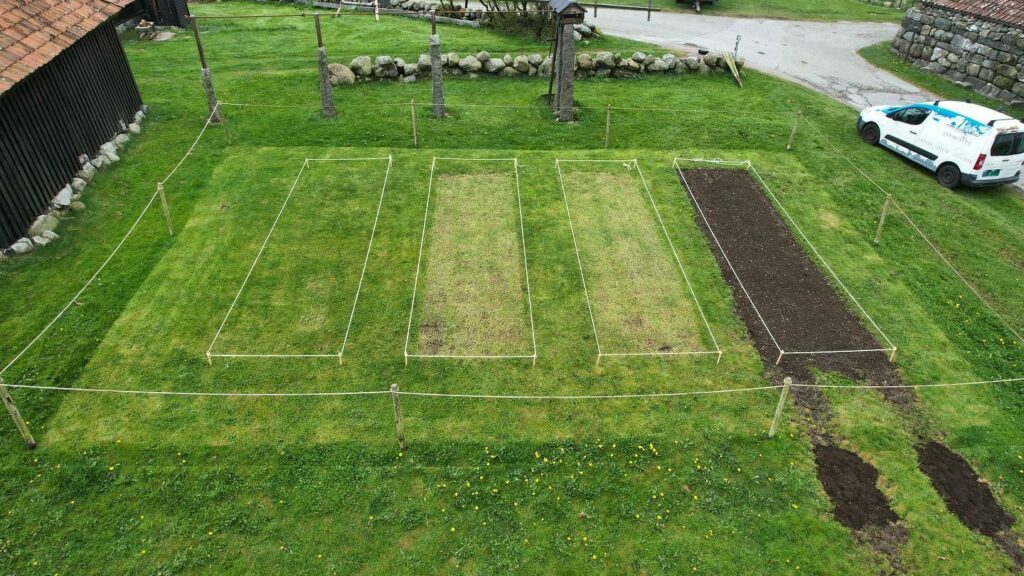The project “From mowed lawn to flowering meadow” aims to:
- Establish a greater biodiversity and a more historically correct natural environment at Grødalandstunet.
- Investigate different methods for establishing a flowering meadow. Can we do it without replacing the soil?
- Inspire others to establish large or small areas that support pollinating insects.
The climate in Jæren (where we’re located) is mild, with plenty precipitation. The soil is often nutrient dense after many years of intensive farming and fertilising. These factors make establishing a flowering meadow difficult. Meadow plants prefer nutrient poor and dry soil. In order to remove nutrients from the field we mow the plants and remove the debris twice each summer.
We started with testing four methods for establishing flower meadows. Each year, the methods will be evaluated and, if necessary, modified so that the flowers can develop as well as possible. NIBIO (Norwegian Institute of Bioeconomy Research) serves as expert advisor.

Squares are numbered from left to right.
Square 1: Reference
Question: What happens if we simply stop mowing the lawn as often? Which plants will take over?
Measure: Stopped mowing the lawn.
Square 2: Sowing in rows
Question: Can the seeds spread and flowers take root among the grass? Or will the grass plants take over?
Measure: Grass mown very short, vertical cuts made into the topsoil. Strips of topsoil removed, seed mixture sown into the same strips.
Square 3: Planting seedlings
Question: Can flowers take root and spread among the grass?
Measure: Grass mown very short, vertical cuts made into the topsoil. Seedlings planted in the lawn.
Square 4: Removing topsoil, sowing
Question: Removing the topsoil, filling in with nutrient poor soil and finally sowing seeds is labour intensive and costly. What sort of flower meadow will be established here? And how will it differ from the other test fields?
Measure: Removed ca. 30 cm of topsoil. Added nutrient poor soil. Sowed.
Square 5: Spray with pesticide and sow
Question: Establishing a meadow on the fringes of cultivated landscapes is difficult. What happens if we follow farmers’ common practice and spray with pesticides, then sow seeds from more robust plant species?
Measure: Sprayed with glyphosate in 2024. Sowed in 2025.
Litterature
Departementene. (2021). Tiltaksplan for ville pollinerende insekter 2021-2028.
Svalheim, Ellen. (2021). Frøboka. Fagbokforlaget.
Serigstad, Jan. (1979). Utviklinga i jordbruket i Time mellom 1865 og 1907. Hovudfagsoppgåve i historie, Universitetet i Bergen.
https://nibio.brage.unit.no/nibio-xmlui/handle/11250/2681546